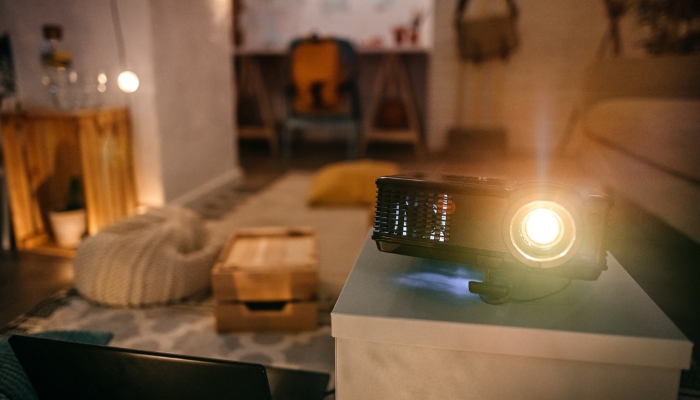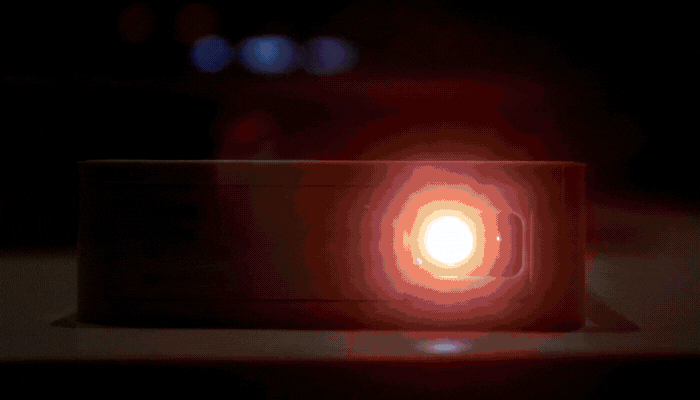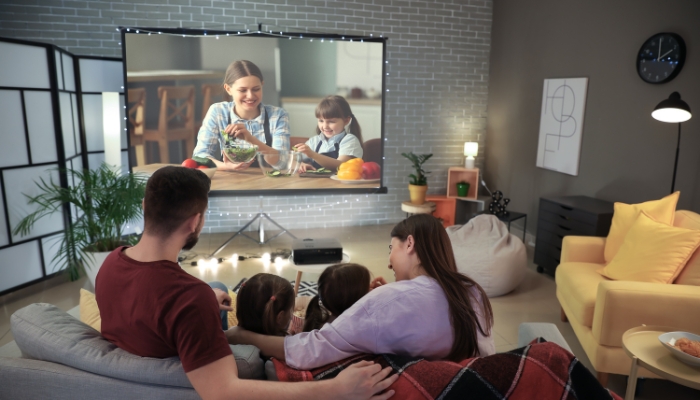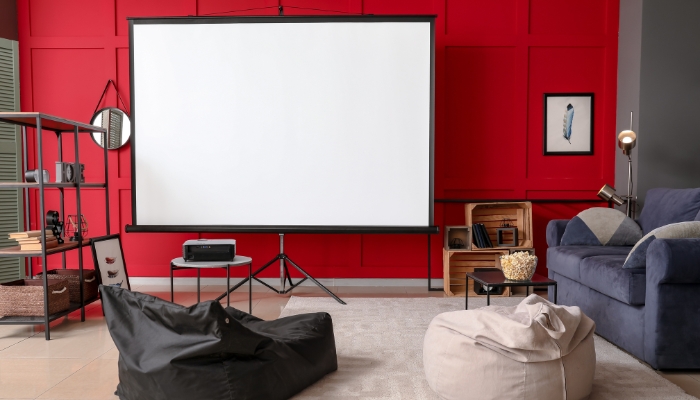When it comes to home theater projectors, lumens are one of the most vital aspects to consider. If you don't have enough lumens, your image quality dwindles, and nobody wants that!
A brighter lamp means more vibrant colors, a clearer overall picture, and versatility when performing with ambient lighting. But how many lumens does it take? The answer depends on several factors, including the level of ambient lighting, the throw distance, and the size of the room! And we'll walk you through each one!
Lumens: What Are They?

Before we delve into lumens, let's take a step back and review the basics. Lumens measure the brightness emitted by a projector (or any other light source). It is the total amount of visible light produced at its source, like the sun, a flashlight, or a projector lightbulb. Ideally, the higher the lumens, the better it will withstand and project a clear image in ambient lighting.
In projectors, lumens tell you how bright the lamp will be, which is vital for understanding the relationship between the projector and the ambient lighting. But this will also depend on the type of light source it has, LED, laser, or a lamp. Lamps have about 2,000 lumens, with laser illuminating more than 3,500 lumens, and LEDs maxing out at 2,000 lumens
ANSI Lumens: A More Accurate Measurement
If you're comparing lumens between projectors, it's essential to understand the difference between lumens and ANSI lumens. ANSI lumens are a more accurate representation of brightness than lumens alone because they take into account the fact that different colors produce different levels of brightness.
ANSI lumens measure the brightest white the projector can output on a cinema screen and are the standard for most manufacturers.
Pro Tip: Be careful when reading the number of lumens, and make sure they state it in ANSI lumens for a more accurate measurement!
Other Measurements to Consider
In addition to lumens and ANSI lumens, you may also come across projector specifications listed in lumens, lux, nits, and watts.
- Lumens are separate from ANSI lumens, with 1 ANSI lumens equaling 2.4 lumens.
- Lux is the unit of measure for brightness per square foot.
- Nits are slightly different than lumens because they represent the light emitted per square meter or foot-candle, depending on which unit of measurement you prefer.
- Watts refers to the power consumed by the bulb, but typically the more wattage a projector has, the brighter it is.
Manufacturers might use any of these measurements to describe the brightness, so be on the lookout for these differences!
Pro Tip: If you're unsure how to calculate the brightness, contact your local retailer!
How Many Lumens Do You Need?

Now that we've covered all the basics related to lumens, let's get to the heart of the matter: how many lumens do you need for your projector? The amount of lumens a projector needs depends on several factors, including the room size, the distance between the projector and screen, and the level of ambient lighting.
- In a completely dark room (movie-theater dark) with all the windows covered, a lamp that is 1,000 to 1,200 lumens provides a good picture (or 13 to 18 lumens per square foot).
- In a room with a few lights, you'll need a projector of around 2,000 lumens to cover the bleed-over from closed windows.
- Multipurpose spaces will need a projector between 2,000 and 4,000 lumens.
- To project a 100-inch to 120-inch screen without ambient lighting, you'll need 1,500 to 2,000 lumens.
- To project a 100-inch to 120-inch screen with ambient or bright lights, a minimum of 3,000 lumens is required.
- In a space with a 6 to 8 ft. viewing distance, look for 1,500 lumens for complete darkness and 2,500 to 3,000 in moderate lighting.
Typically, the bigger the image screen, the higher lumen count you need. For instance, a unit with 3,000 ANSI lumens is enough to project an 80-inch screen with minimal distortion, but you need to control the ambient lighting!
Can A Projector Be Too Bright?
Another essential factor to consider when choosing lumens for a projector is whether it can be too bright! In most cases, having more lumens is always better, but there are some instances when a projector can be too bright.
Brighter isn't always better because brighter lamps can hurt your eyes. Anything with 2,000 to 2,500 lumens in a completely dark space will be overwhelming. So, to avoid that, remember to look for the best color performance and contrast ratio effect so your image is clearer.
Lumens & Content

The type of content you're displaying also plays an essential role in lumens selection. If you're using a projector for business presentations or text-heavy documents, lumens won't matter as much since these don't require a lot of brightness. But a projector with 2,000 lumens hits the sweet spot for viewing movies and shows or gaming.
If you have a portable unit, then you'll need a minimum of 1,500 lumens. However, when it comes to content, you should look at the resolution first and foremost — you can't beat a 4K picture!
Projector Screens

Finally, when choosing lumens for your projector, the type of projector screen is just as vital. Typically, white matte screens are better at reflecting light, while black pearl screens absorb some of the lumens and create a richer, more dynamic image. But ambient light-rejecting screens are the best at diminishing the effect of other lighting sources!
An ambient light-rejecting projector screen will only reflect light from the source! Some models will reflect unwanted light away from the viewer, while others absorb any ambient light that hits the screen. In any case, talk over your options with your local retailer to find the best setup for your home theater!
You should also look at the System Foot-Lamberts, which measure how much light the screen will reflect from a 1ft. x 1ft portion of the screen. This calculates the picture created by the projector and screen together and lets you know if it'll be bright enough.
Pro Tip: To calculate the System Foot-Lamberts, take the brightness (or lumens) of the projector, divide it by the square feet area of your screen, and then multiply it by the screen gain!
Roll Picture!
The bottom line is that lumens play an essential role in projector selection. The number of lumens you need will depend on your room size, ambient lighting, and the type of content being viewed, so make sure to do your research before making a decision! And at Toton’s TV, you'll find a wide selection of home theater projectors and industry expertise to help you with your dream viewing experience!
Don't forget to give us a call if you have any questions! We're happy to help you select the best projector for your needs!